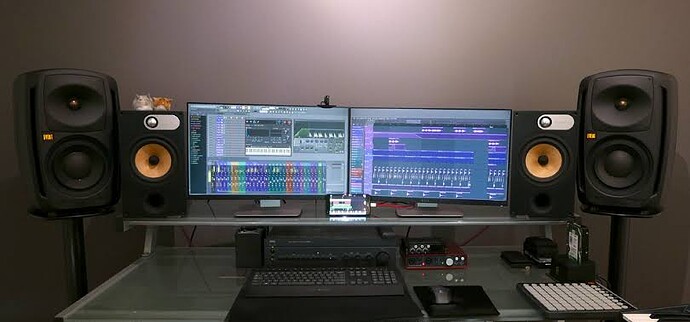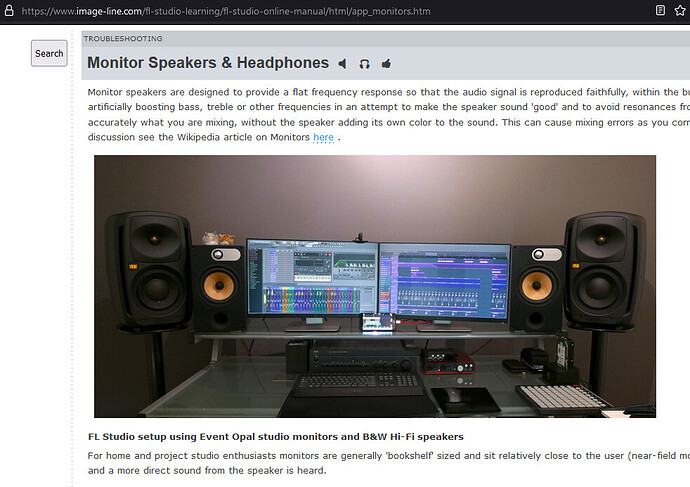What the picture doesn’t show is that the editing room also needs to be at least somewhat acoustically treated before the benefits of those monitors will be noticeable and useful.
If the room is so small that bass build-up happens in the corners of the room, then the person mixing won’t perceive a flat frequency response due to the room distortions (which includes echo) even though the monitors are flat and neutral. It takes bass traps and usually broadband absorbers or diffusion panels to make the response of the room itself be close to flat (or at least hit a Harman house curve). It usually helps if the speakers are firing down the longest dimension of the room.
Positioning the speakers and mixing position to avoid null points (where new sound waves collide with wall-bounce sound waves and cancel each other out) is another necessity. This is where the common saying of “put the listening position 3/8ths of the way down the long wall” came from, because that wavelength tends to have the least self-cancellation effect. (Some people call it 38% distance, but that’s just three divided by eight rounded up. The real definition is 3/8th resonate frequency wavelength.)
The speakers and the mix position should also be designed such that they create an equilateral triangle. If the speakers are wider or more narrow than equilateral, it will affect the mixer’s perception of stereo imaging. As in, speakers directly to the left and right sides of the mixer’s head mean there is no “phantom center channel” where both speakers are heard in front of you, because they’re literally not in front of you. Similarly, if both speakers were directly in front of you, there would be no sensation of left/right panning. So, many studios and fancy home theaters standardize on an equilateral triangle as a compromise to simulate left, center, and right perception with only two speakers.
Other acoustic considerations are putting isolation pads under the monitors so that the speaker cabinet doesn’t vibrate the desk and turn the desk into an extended speaker or rumble pad. The picture above does not have isolation pads on the inner monitors. Also, speakers should be 12-18 inches from a wall rather than right up against a wall to reduce bass swell and phasing issues.
If room problems aren’t addressed, then the echo and resonance characteristics of the room will ruin the flat response of the speakers, and the person mixing still won’t know what “the truth” is. And they will have spent a lot of money for results that aren’t much better than consumer speakers.
EDIT: Sorry for the brain dump that nobody asked for lol. Audio engineering isn’t discussed often in the forum, and this seemed like a good topic to talk about the hardware and costs involved. If somebody is budgeting to build a home studio and they’re serious about audio, then they need to include the costs of acoustically treating the room as well. The temptation is to spend all of the budget on the latest high-end CPU and GPU, even though the CPU might be half-idle during export anyway. For people seeking high-end results, money is usually better spent on good audio monitors, a treated room, and a calibrated screen so that the person editing a video can accurately see and hear what’s happening in their production. Otherwise, they may be disappointed when they play their video back on somebody else’s device and the reds shift to orange and the audio sounds tinny.


